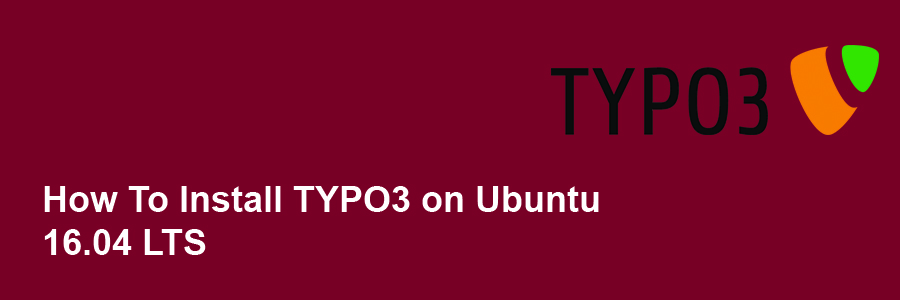Joomla is a free and open source popular content management that uses a PHP and a backend database, such as MySQL. It offers a wide variety of features that make it an incredibly flexible content management system right out of the box. Furthermore, there are hundreds of free extensions written for that allows users to extend its functionality and customize it to their own objectives. Continue reading “How To Install Joomla 3.9.5 on Ubuntu 18.04 LTS”
How To Install Laravel on Ubuntu 18.04 LTS
Laravel is a free, open-source PHP web application framework, created by Taylor Otwell and intended for the development of web applications following the model–view–controller (MVC) architectural pattern. It is a pretty new framework, but with a big potential to become one of the most popular PHP frameworks.
This article assumes you have at least basic knowledge of Linux, know how to use the shell, and most importantly, you host your site on your own VPS. The installation is quite simple and assumes you are running in the root account, if not you may need to add ‘sudo’ to the commands to get root privileges. I will show you through the step by step installation Laravel on Ubuntu 18.04 Bionic Beaver server.
Install Laravel on Ubuntu 18.04 LTS Bionic Beaver
Step 1. First, make sure that all your system packages are up-to-date
sudo apt-get update sudo apt-get upgrade
Step 2. Install LAMP (Linux, Apache, MariaDB, PHP) server.
A Ubuntu 18.04 LAMP server is required. If you do not have LAMP installed, you can follow our guide here. Also install all required PHP modules:
apt-get install php7.1-cli php7.1-gd php7.1-opcache php7.1-mysql php7.1-json php7.1-mcrypt php7.1-xml php7.1-curl
Step 3. Install Composer.
Install Composer which is the tool for dependency management in PHP:
curl -sS https://getcomposer.org/installer | sudo php
In this tutorial we will put the composer in our /usr/local/bin/ directory. We will also rename the composer name from composer.phar to composer. To do that type the following command:
mv composer.phar /usr/local/bin/composer
Give execute permission to the composer:
chmod +x /usr/local/bin/composer
Step 4. Installing Laravel on Ubuntu 18.04 LTS.
Download latest version of Laravel, Use below command to clone master repo of laravel from github, At the moment of writing this article it is version 5:
cd /var/www git clone https://github.com/laravel/laravel.git
After than move to the laravel code directory and use composer to install all dependencies required for Laravel framework:
cd /var/www/laravel composer install
This will take a while according to the network speed. After than set proper permissions on files:
chown -R www-data.www-data /var/www/laravel chmod -R 755 /var/www/laravel chmod -R 777 /var/www/laravel/app/storage
Now set the 32 bit long random number encrypption key, which used by the Illuminate encrypter service:
### php artisan key:generate Application key [Lf54qKbi3mwe463qR4NtYywgf9JdRGramona9qI] set successfully
Now edit config/app.php configuration file and update above generated application key as followings. Also make sure cipher is set properly:
y' => env('APP_KEY', 'Lf54qKbi3mwe463qR4NtYywgf9JdRGramona9qI'),
'cipher' => 'AES-256-CBC',
Step 5. Configuring Apache web server for Laravel.
Create a new virtual host directive in Apache. For example, create a new Apache configuration file named ‘laravel.conf’ on your virtual server:
sudo a2enmod rewrite sudo a2ensite laravel.conf touch /etc/apache2/sites-available/laravel.conf ln -s /etc/apache2/sites-available/laravel.conf /etc/apache2/sites-enabled/laravel.conf nano /etc/apache2/sites-available/laravel.conf
Add the following lines:
<VirtualHost *:80> ServerAdmin [email protected] DocumentRoot /var/www/laravel/public ServerName your-domain.com ServerAlias www.your-domain.com <Directory /var/www/laravel/public/> Options FollowSymLinks AllowOverride All Order allow,deny allow from all </Directory> ErrorLog /var/log/apache2/your-domain.com-error_log CustomLog /var/log/apache2/your-domain.com-access_log common </VirtualHost>
Now, we can restart Apache web server so that the changes take place:
systemctl restart apache2.service
Step 6. Accessing Laravel.
Laravel will be available on HTTP port 80 by default. Open your favorite browser and navigate to http://yourdomain.com or http://server-ip and complete the required the steps to finish the installation. If you are using a firewall, please open port 80 to enable access to the control panel.
Congratulation’s! You have successfully installed Laravel. Thanks for using this tutorial for installing Laravel in Ubuntu 18.04 LTS (Bionic Beaver) systems. For additional help or useful information, we recommend you to check the official Laravel web site.
How To Install ImpressPages on Ubuntu 18.04 LTS
ImpressPages is an open source Content Management System (CMS) with a built-in content editor written in PHP and using a popular open source MySQL/MariaDB database system for content storage. ImpressPages 5 is incredibly easy to learn and helps you create beautiful websites with quality content. In this tutorial we will show you how to install ImpressPages on Ubuntu 18.04 LTS.
This article assumes you have at least basic knowledge of Linux, know how to use the shell, and most importantly, you host your site on your own VPS. The installation is quite simple and assumes you are running in the root account, if not you may need to add ‘sudo’ to the commands to get root privileges. I will show you through the step by step installation Joomla on an Ubuntu 18.04 (Bionic Beaver) server.
Install ImpressPages on Ubuntu 18.04 LTS Bionic Beaver
Step 1. First make sure that all your system packages are up-to-date
sudo apt-get update sudo apt-get upgrade
Step 2. Install LAMP (Linux, Apache, MariaDB, PHP) server.
A Ubuntu 18.04 LAMP server is required. If you do not have LAMP installed, you can follow our guide here. Also install all required PHP modules:
apt-get install php7.1-cli php7.1-gd php7.1-opcache php7.1-mysql php7.1-json php7.1-mcrypt php7.1-xml php7.1-curl
Step 3. Installing ImpressPages on Ubuntu 18.04 LTS.
First thing to do is to go to ImpressPages’s download page and download the latest stable version of ImpressPages, At the moment of writing this article it is version 5.0.3:
wget http://download.impresspages.org/ImpressPages_5_0_3.zip unzip ImpressPages_5_0_3.zip mv ImpressPages /var/www/html/impress
We will need to change some folders permissions:
chown -R www-data:www-data /var/www/html/impress/ chmod -R 755 /var/www/html/impress/
Step 4. Configuring MariaDB for ImpressPages.
By default, MariaDB is not hardened. You can secure MariaDB using the mysql_secure_installation script. You should read and below each steps carefully which will set root password, remove anonymous users, disallow remote root login, and remove the test database and access to secure MariaDB.
mysql_secure_installation
Configure it like this:
- Set root password? [Y/n] y - Remove anonymous users? [Y/n] y - Disallow root login remotely? [Y/n] y - Remove test database and access to it? [Y/n] y - Reload privilege tables now? [Y/n] y
Next we will need to log in to the MariaDB console and create a database for the ImpressPages. Run the following command:
mysql -u root -p
This will prompt you for a password, so enter your MariaDB root password and hit Enter. Once you are logged in to your database server you need to create a database for ImpressPages installation:
MariaDB [(none)]> CREATE DATABASE impresspages; MariaDB [(none)]> GRANT ALL PRIVILEGES ON impresspages.* TO 'impressuser'@'localhost' IDENTIFIED BY 'your-password'; MariaDB [(none)]> FLUSH PRIVILEGES; MariaDB [(none)]> \q
Step 5. Configuring Apache web server for ImpressPages.
Create a new virtual host directive in Apache. For example, create a new Apache configuration file named ‘impresspages.conf’ on your virtual server:
sudo a2enmod rewrite touch /etc/apache2/sites-available/impresspages.conf ln -s /etc/apache2/sites-available/impresspages.conf /etc/apache2/sites-enabled/impresspages.conf nano /etc/apache2/sites-available/impresspages.conf
Add the following lines:
<VirtualHost *:80> ServerAdmin [email protected] DocumentRoot /var/www/html/impress ServerName your-domain.com ServerAlias www.your-domain.com <Directory /var/www/html/impress/> Options FollowSymLinks AllowOverride All Order allow,deny allow from all </Directory> ErrorLog /var/log/apache2/your-domain.com-error_log CustomLog /var/log/apache2/your-domain.com-access_log common </VirtualHost>
Now, we can restart Apache web server so that the changes take place:
systemctl restart apache2.service
Step 6. Accessing ImpressPages.
ImpressPages will be available on HTTP port 80 by default. Open your favorite browser and navigate to http://yourdomain.com/ or http://server-ip and complete the required the steps to finish the installation. If you are using a firewall, please open port 80 to enable access to the control panel.
Congratulation’s! You have successfully installed ImpressPages. Thanks for using this tutorial for installing ImpressPages CMS (content management system) on Ubuntu 18.04 LTS systems. For additional help or useful information, we recommend you to check the official ImpressPages web site.
How To Install Composr CMS on Ubuntu 18.04 LTS
Composr CMS is an open-source content management system for next-generation websites written in PHP with advanced social, interactive and dynamic functionality. The installation process is fairly easy and it takes only a couple of minutes.
This article assumes you have at least basic knowledge of Linux, know how to use the shell, and most importantly, you host your site on your own VPS. The installation is quite simple and assumes you are running in the root account, if not you may need to add ‘sudo’ to the commands to get root privileges. I will show you through the step by step installation Joomla on an Ubuntu 18.04 (Bionic Beaver) server.
Install Composr CMS on Ubuntu 18.04 LTS Bionic Beaver
Step 1. First make sure that all your system packages are up-to-date
sudo apt-get update sudo apt-get upgrade
Step 2. Install LAMP (Linux, Apache, MariaDB, PHP) server.
A Ubuntu 18.04 LAMP server is required. If you do not have LAMP installed, you can follow our guide here. Also install all required PHP modules:
apt-get install php7.1-cli php7.1-gd php7.1-opcache php7.1-mysql php7.1-json php7.1-mcrypt php7.1-xml php7.1-curl
Step 3. Installing Composr Cms on Ubuntu 18.04 LTS.
First, download the latest stable version of Composr Cms:
wget http://compo.sr/site/dload.php?id=457 -O composr.zip mkdir /var/www/html/composr unzip composr.zip -d /var/www/html/composr
We will need to change some folders permissions:
chown -R www-data:www-data /var/www/html/composr/ chmod -R 755 /var/www/html/composr/
Step 4. Configuring MariaDB for Composr Cms.
By default, MariaDB is not hardened. You can secure MariaDB using the mysql_secure_installation script. You should read and below each steps carefully which will set root password, remove anonymous users, disallow remote root login, and remove the test database and access to secure MariaDB.
mysql_secure_installation
Configure it like this:
- Set root password? [Y/n] y - Remove anonymous users? [Y/n] y - Disallow root login remotely? [Y/n] y - Remove test database and access to it? [Y/n] y - Reload privilege tables now? [Y/n] y
Next we will need to log in to the MariaDB console and create a database for the Composr Cms. Run the following command:
mysql -u root -p
This will prompt you for a password, so enter your MariaDB root password and hit Enter. Once you are logged in to your database server you need to create a database for Composr Cms installation:
MariaDB [(none)]> CREATE DATABASE composrdb; MariaDB [(none)]> GRANT ALL PRIVILEGES ON composrdb.* TO 'composr'@'localhost' IDENTIFIED BY 'your_password' WITH GRANT OPTION; MariaDB [(none)]> SET @@global.sql_mode= ''; MariaDB [(none)]> FLUSH PRIVILEGES; MariaDB [(none)]> quit
Step 5. Configuring Apache web server for Composr Cms.
Create a new virtual host directive in Apache. For example, create a new Apache configuration file named ‘composr.conf’ on your virtual server:
sudo a2enmod rewrite sudo a2ensite composr.conf touch /etc/apache2/sites-available/composr.conf ln -s /etc/apache2/sites-available/composr.conf /etc/apache2/sites-enabled/composr.conf nano /etc/apache2/sites-available/composr.conf
Add the following lines:
<VirtualHost *:80> ServerAdmin [email protected] DocumentRoot /var/www/html/composr ServerName your-domain.com ServerAlias www.your-domain.com <Directory /var/www/html/composr/> Options FollowSymLinks AllowOverride All Order allow,deny allow from all </Directory> ErrorLog /var/log/apache2/your-domain.com-error_log CustomLog /var/log/apache2/your-domain.com-access_log common </VirtualHost>
Now, we can restart Apache web server so that the changes take place:
systemctl restart apache2.service
Step 6. Accessing Composr CMS.
Composr CMS will be available on HTTP port 80 by default. Open your favorite browser and navigate to http://yourdomain.com/install.php or http://server-ip/install.php and complete the required the steps to finish the installation. If you are using a firewall, please open port 80 to enable access to the control panel.
Congratulation’s! You have successfully installed Composr. Thanks for using this tutorial for installing Composr CMS (content management system) on Ubuntu 18.04 LTS systems. For additional help or useful information, we recommend you to check the official Composr CMS web site.
How To Install Lighttpd With MariaDB and PHP on Ubuntu 18.04 LTS
Lighttpd is a fast and secure web-server which has been optimized for high-performance environments. With a small memory footprint compared to other web-servers, effective management of the cpu-load, and advanced feature set (FastCGI, SCGI, Auth, Output-Compression, URL-Rewriting and many more) lighttpd is the perfect solution for every server that is suffering load problems.
This article assumes you have at least basic knowledge of Linux, know how to use the shell, and most importantly, you host your site on your own VPS. The installation is quite simple and assumes you are running in the root account, if not you may need to add ‘sudo’ to the commands to get root privileges. I will show you through the step by step installation Lighttpd With MariaDB and PHP FastCGI on Ubuntu 18.04 Bionic Beaver server.
Install Lighttpd With MariaDB and PHP on Ubuntu 18.04 LTS Bionic Beaver
Step 1. First make sure that all your system packages are up-to-date
apt-get update apt-get upgrade
Step 2. Installing Lighttpd on Ubuntu 18.04 LTS.
Lighttpd is available to install from the official Ubuntu repositories, So if you want to install Lighttpd, you only have to run this command:
sudo apt install lighttpd
To start up Lighttpd webserver, run the commands below and You can test the status of the server by accessing the IP address of your VPS in a web browser. Upon success, you will see the Lighttp welcome page:
systemctl start lighttpd.service
Step 3. Installing MariaDB on Ubuntu 18.04 LTS.
To install MariaDB in Ubuntu run the following command:
sudo apt install mariadb-server mariadb-client
By default, MariaDB is not hardened. You can secure MariaDB using the mysql_secure_installation script. you should read and below each steps carefully which will set root password, remove anonymous users, disallow remote root login, and remove the test database and access to secure MariaDB:
mysql_secure_installation
To log into MariaDB, use the following command (note that it’s the same command you would use to log into a MySQL database):
mysql -u root -p
To start the database, run the commands below:
systemctl start mariadb.service
Step 4. Installing PHP 7 FastCGI and other PHP7 modules.
First, add the below third party repository to upgrade to PHP 7.1:
sudo apt-get install software-properties-common sudo add-apt-repository ppa:ondrej/php
Then, install and upgrade to PHP 7.1:
sudo apt update sudo apt install php7.1-cgi php7.1-mcrypt php7.1-cli php7.1-mysql php7.1-gd php7.1-imagick php7.1-recode php7.1-tidy php7.1-xmlrpc
Enable PHP CGI modules in Lighttpd with the following commands:
sudo sudo lighttpd-enable-mod fastcgi sudo lighttpd-enable-mod fastcgi-php
After enabling the modules, you need to restart the Lighttpd service by running the following command:
systemctl restart lighttpd
Testing if PHP is working:
nano /srv/www/htdocs/info.php
Then, we’ll simply add the following line into the file:
<?php phpinfo(); ?>
Step 5. Configure firewall for LLMP.
Run following commands to allow HTTP (80) and HTPPS (443) request through the firewall.
ufw allow 80/tcp ufw allow 443/tcp ufw reload
Congratulations! You have successfully installed LLMP. Thanks for using this tutorial for installing Lighttpd With PHP FPM and MariaDB in Ubuntu 18.04 LTS Bionic Beaver systems. For additional help or useful information, we recommend you to check the official Lighttpd web site.
How To Install TYPO3 on Ubuntu 16.04 LTS
TYPO3 is an enterprise open source content management system based on PHP. It’s intended for ease of use to allow owners and enterprises to create powerful and dynamic content websites.
If you’re looking for a functional, higher performance content management system to manage your websites or blogs and 100% free, then you’ll find TYPO3 to be helpful.
This article assumes you have at least basic knowledge of Linux, know how to use the shell, and most importantly, you host your site on your own VPS. The installation is quite simple and assumes you are running in the root account, if not you may need to add ‘sudo’ to the commands to get root privileges. I will show you through the step by step installation TYPO3 cms on an Ubuntu 16.04 Xenial Xerus server.
Install TYPO3 on Ubuntu 16.04 LTS
Step 1. First make sure that all your system packages are up-to-date
sudo apt-get update sudo apt-get upgrade
Step 2. Install LAMP (Linux, Apache, MariaDB, PHP) server.
A Ubuntu 16.04 LAMP server is required. If you do not have LAMP installed, you can follow our guide here. Also install all required PHP modules:
apt-get install php7.0-mysql php7.0-curl php7.0-json php7.0-cgi php7.0 libapache2-mod-php7.0 php7.0-mcrypt php7.0-xmlrpc php7.0-gd
Step 3. Installing TYPO3.
First thing to do is to go to TYPO3’s download page and download the latest stable version of TYPO3, At the moment of writing this article it is version 9:
wget https://typo3.azureedge.net/typo3/9.0.0/typo3_src-9.0.0.tar.gz
Unpack the TYPO3 archive to the document root directory on your server:
tar xzvf typo3_src-9.0.0.tar.gz cd typo3_src-9.0.0/ cp -r . /var/www/html/
We will need to change some folders permissions:
chown www-data:www-data -R /var/www/html/
Step 4. Configuring MariaDB for TYPO3.
By default, MariaDB is not hardened. You can secure MariaDB using the mysql_secure_installation script. you should read and below each steps carefully which will set root password, remove anonymous users, disallow remote root login, and remove the test database and access to secure MariaDB:
mysql_secure_installation
Configure it like this:
- Set root password? [Y/n] y - Remove anonymous users? [Y/n] y - Disallow root login remotely? [Y/n] y - Remove test database and access to it? [Y/n] y - Reload privilege tables now? [Y/n] y
Next we will need to log in to the MariaDB console and create a database for the TYPO3. Run the following command:
mysql -u root -p
This will prompt you for a password, so enter your MariaDB root password and hit Enter. Once you are logged in to your database server you need to create a database for TYPO3 installation:
CREATE DATABASE typo3; CREATE USER typo_db_user@localhost IDENTIFIED BY ‚secretpassword‘; GRANT ALL PRIVILEGES ON typo3.* TO typo_db_user@localhost; FLUSH PRIVILEGES; exit
Step 5. Configuring Apache web server for TYPO3.
Create a new virtual host directive in Apache. For example, create a new Apache configuration file named ‘typo.conf’ on your virtual server:
sudo a2enmod rewrite touch /etc/apache2/sites-available/typo.conf ln -s /etc/apache2/sites-available/typo.conf /etc/apache2/sites-enabled/typo.conf nano /etc/apache2/sites-available/typo.conf
Add the following lines:
<VirtualHost *:80> ServerAdmin [email protected] DocumentRoot /var/www/html/ ServerName your-domain.com ServerAlias www.your-domain.com <Directory /var/www/html/> Options FollowSymLinks AllowOverride All Order allow,deny allow from all </Directory> ErrorLog /var/log/apache2/your-domain.com-error_log CustomLog /var/log/apache2/your-domain.com-access_log common </VirtualHost>
Now, we can restart Apache web server so that the changes take place:
systemctl restart apache2.service
Next we have to make some PHP settings. For this we go into the php.ini and adjust a few settings:
nano /etc/php/7.0/apache2/php.ini
Then make the change the following lines below in the file and save:
file_uploads = On allow_url_fopen = On memory_limit = 256M upload_max_file_size = 64M max_execution_time = 240 max_input_vars = 1500
Step 6. Accessing TYPO3 CMS.
TYPO3 will be available on HTTP port 80 by default. Open your favorite browser and navigate to http://yourdomain.com/ or http://server-ip/ and complete the required the steps to finish the installation. If you are using a firewall, please open port 80 to enable access to the control panel.
Congratulation’s! You have successfully installed TYPO3. Thanks for using this tutorial for installing TYPO3 cms on your Ubuntu 16.04. For additional help or useful information, we recommend you to check the official TYPO3 web site.
How To Install Concrete5 on Ubuntu 16.04 LTS
Concrete5 is one of the most popular content management systems available on thhe Internet. It is written in PHP and uses MySQL or MariaDB to store its data. It comes with an easy to use website builder through which you can easily create pages and content. Concrete5 is flexible, secure and mobile ready.
This article assumes you have at least basic knowledge of Linux, know how to use the shell, and most importantly, you host your site on your own VPS. The installation is quite simple and assumes you are running in the root account, if not you may need to add ‘sudo’ to the commands to get root privileges. I will show you through the step by step installation Concrete5 open source content management system on an Ubuntu 16.04 Xenial Xerus server.
Install Concrete5 on Ubuntu 16.04 LTS
Step 1. First make sure that all your system packages are up-to-date
sudo apt-get update sudo apt-get upgrade
Step 2. Install LAMP (Linux, Apache, MariaDB, PHP) server.
A Ubuntu 16.04 LAMP server is required. If you do not have LAMP installed, you can follow our guide here. Also install all required PHP modules:
apt-get install php7.0-mysql php7.0-curl php7.0-json php7.0-cgi php7.0 libapache2-mod-php7.0 php7.0-mcrypt php7.0-xmlrpc php7.0-gd
Step 3. Installing Concrete5.
First thing to do is to go to Concrete5’s download page and download the latest stable version of Concrete5:
wget https://www.concrete5.org/download_file/-/view/99963/ -O concrete5.zip
After downloading Concrete5 you will need to unzip master.zip. To do this, run:
unzip concrete5.zip mv concrete5-8.3.1 /var/www/html/concrete5
We will need to change some folders permissions:
chown -R www-data:www-data /var/www/html/concrete5
Step 4. Configuring MariaDB for Concrete5.
By default, MariaDB is not hardened. You can secure MariaDB using the mysql_secure_installation script. you should read and below each steps carefully which will set root password, remove anonymous users, disallow remote root login, and remove the test database and access to secure MariaDB:
mysql_secure_installation [php] Configure it like this: [php] - Set root password? [Y/n] y - Remove anonymous users? [Y/n] y - Disallow root login remotely? [Y/n] y - Remove test database and access to it? [Y/n] y - Reload privilege tables now? [Y/n] y
Next we will need to log in to the MariaDB console and create a database for the Concrete5. Run the following command:
mysql -u root -p
This will prompt you for a password, so enter your MariaDB root password and hit Enter. Once you are logged in to your database server you need to create a database for Concrete5 installation:
MariaDB [(none)]>CREATE USER 'concrete_user'@'localhost' IDENTIFIED BY 'password'; MariaDB [(none)]>GRANT ALL PRIVILEGES ON concretedb.* TO 'concrete_user'@'localhost' IDENTIFIED BY 'password' WITH GRANT OPTION; MariaDB [(none)]>FLUSH PRIVILEGES; MariaDB [(none)]>exit;
Step 5. Configuring Apache web server for Concrete5.
Create a new virtual host directive in Apache. For example, create a new Apache configuration file named ‘concrete.conf’ on your virtual server:
sudo a2enmod rewrite touch /etc/apache2/sites-available/concrete.conf ln -s /etc/apache2/sites-available/concrete.conf /etc/apache2/sites-enabled/concrete.conf nano /etc/apache2/sites-available/concrete.conf
Add the following lines:
<VirtualHost *:80> ServerAdmin [email protected] DocumentRoot /var/www/html/concrete5 ServerName your-domain.com ServerAlias www.your-domain.com <Directory /var/www/html/concrete5> Options FollowSymLinks AllowOverride All Order allow,deny allow from all </Directory> ErrorLog /var/log/apache2/your-domain.com-error_log CustomLog /var/log/apache2/your-domain.com-access_log common </VirtualHost>
Now, we can restart Apache web server so that the changes take place:
systemctl restart apache2.service
Step 6. Accessing Concrete5.
Concrete5 will be available on HTTP port 80 by default. Open your favorite browser and navigate to http://yourdomain.com or http://server-ip and complete the required the steps to finish the installation.
Congratulation’s! You have successfully installed Concrete5. Thanks for using this tutorial for installing Concrete5 open source content management system on your Ubuntu 16.04 LTS. For additional help or useful information, we recommend you to check the official Concrete5 web site.






